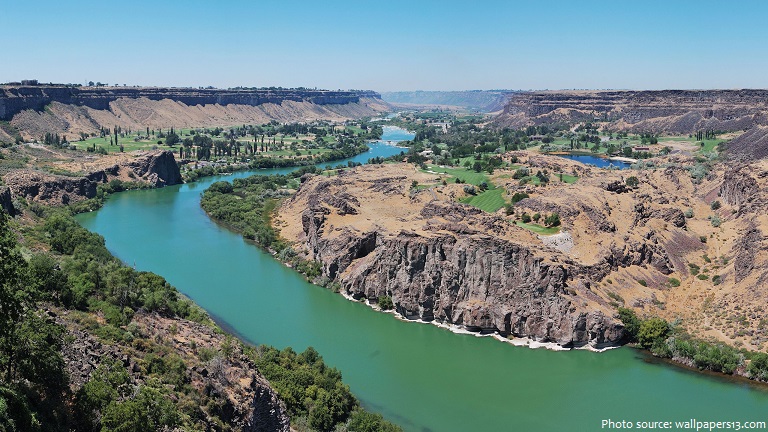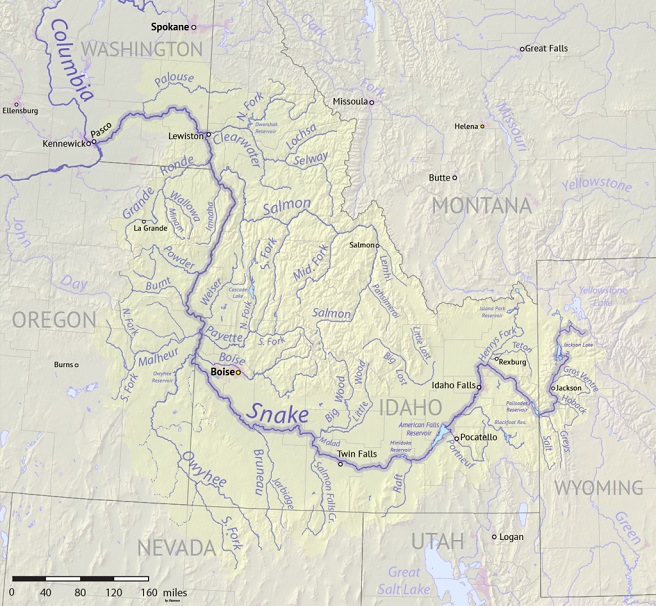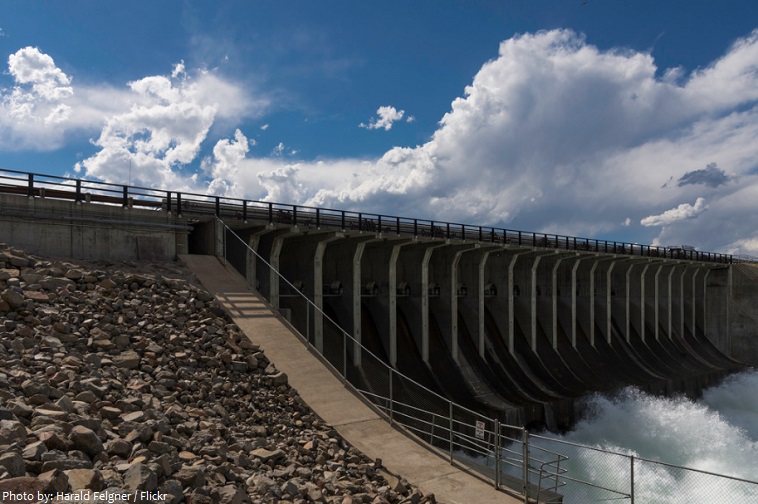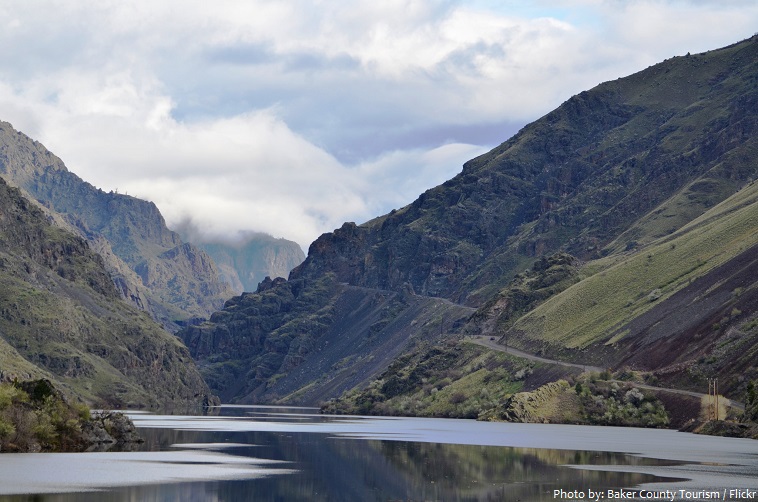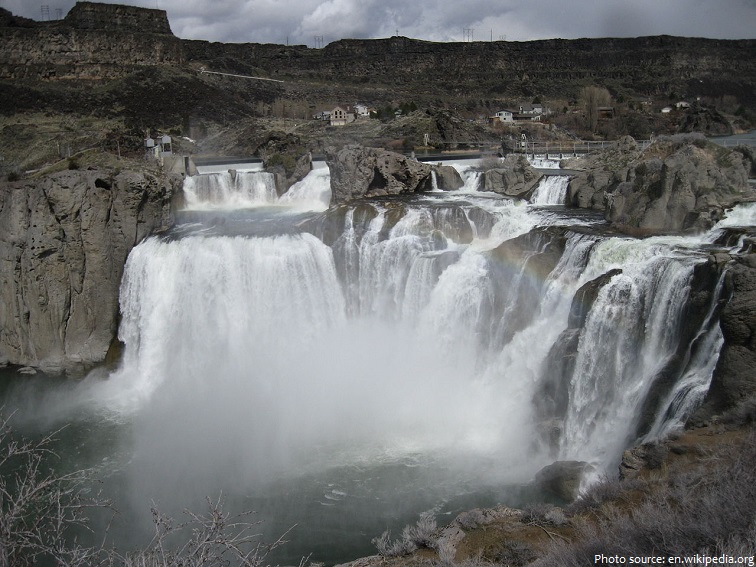The Snake River is a major river of the greater Pacific Northwest in the United States.
The length of the Snake River is approximately 1,735 kilometers (1,078 miles). It is the 9th longest river in the United States.
The Snake River is the largest tributary of the Columbia River.
It rises in the mountains of the Continental Divide near the southeastern corner of Yellowstone National Park in northwestern Wyoming and flows through the Snake River Plain of southern Idaho, then through the rugged Hells Canyon area via northeastern Oregon and the rolling Palouse Hills, to reach its mouth near the Washington Tri-Cities area, where it enters the Columbia River.
Its drainage basin is the 10th largest among North American rivers, and covers almost 280,000 square kilometers (108,000 square miles) in portions of six U.S. states: Wyoming, Idaho, Nevada, Utah, Oregon, and Washington, with the largest portion in Idaho.
The Snake River’s average flow is 1,553 cubic meters (54,830 cubic feet) per second.
The Snake River has over 20 major tributaries, most of which are in the mountainous regions of the basin. By discharge the largest is the Clearwater River; the second largest is the Salmon River.
Many factors have influenced the construction of dams along the Snake River. A total of fifteen dams have been constructed along the Snake River for a multitude of different purposes.
Dams on the Snake can be grouped into three major categories. From its headwaters to the beginning of Hells Canyon, many small dams block the Snake to provide irrigation water. In Hells Canyon, a cascade of dams produce hydroelectricity from the river’s lofty decrease in elevation over a comparatively small distance. Finally, a third cascade of dams, from Hells Canyon to the mouth, facilitates navigation.
Hells Canyon, deep gorge of the Snake River forms part of the boundary between Idaho and Oregon and separates the Seven Devils (Idaho) and Wallowa (Oregon) mountain ranges. The canyon has a total length of 201 kilometers (125 miles), along 64 kilometers (40 miles) of which it is more than 1.6 kilometers (1 mile) deep. It reaches a maximum depth of 2,436 meters (7,993 feet), making it the deepest gorge on the North American continent.
The Snake River Plain is a prominent depression across southern Idaho extending 640 kilometers (400 miles) in an east-west direction. It is arc shaped with the concave side to the north. The Snake River Plain was created by a volcanic hotspot which now lies underneath Yellowstone National Park, where the headwaters of the Snake River arise.
Shoshone Falls is a waterfall on the Snake River in southern Idaho, approximately 4.8 kilometers (3 miles) northeast of the city of Twin Falls. Sometimes called the “Niagara of the West,” Shoshone Falls is 65 meters (212 feet) high — 14 m (45 feet) higher than Niagara Falls — and flows over a rim nearly 300 m (1,000 feet) wide. Shoshone Falls marks the historical upper limit of fish migration (including salmon) in the Snake River, and was an important fishing and trading place for Native Americans.
More than 11,000 years ago, prehistoric Native Americans lived along the Snake. Salmon from the Pacific Ocean spawned by the millions in the river. These fish were central to the lives of the people along the Snake below Shoshone Falls.
The Snake River likely got its name from the first European explorers who misinterpreted the sign made by the Shoshone people who identified themselves in sign language by moving the hand in a swimming motion which appeared to these explorers to be a “snake.” It actually signified that they lived near the river with many fish.
By the middle 19th century, the Oregon Trail, a pioneer trail of which a major portion followed the Snake River, had been established by aspiring settlers and traders.
Unlike the Columbia River, it was far more difficult for steamboats to navigate on the Snake. The Columbia River drops 820 meters (2,690 feet) from source to mouth, while the Snake drops over 2,600 meters (8,500 feet) in elevation over a length more than 320 km (200 miles) shorter. Still, from the 1860s to the 1940s, steamboats traveled on the Snake River.
The Snake River was once one of the most important rivers for the spawning of anadromous fish — which are hatched in the headwaters of rivers, live in the ocean for most of their lives, and return to the river to spawn — in the United States. The river supported species including chinook salmon, coho salmon, and sockeye salmon, as well as steelhead, white sturgeon, and Pacific lamprey.
Since the 1990s, some conservation organizations and fishermen are seeking to restore the lower Snake River and its fish population by removing four federally-owned dams on the lower Snake River.
Aside from aquatic species, much of the Snake River watershed supports larger animals including the gray wolf, grizzly bear, wolverine, mountain lion, Canada lynx, pronghorn and bighorn sheep.
About 274 bird species, some endangered or threatened, use the Snake River watershed, including bald eagle, peregrine falcon, whooping crane, greater sage-grouse, and yellow-billed cuckoo.
The Snake River watershed includes parts of Yellowstone National Park, Grand Teton National Park, Hells Canyon National Recreation Area, and many other national and state parks.
